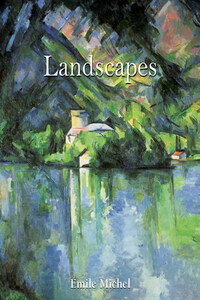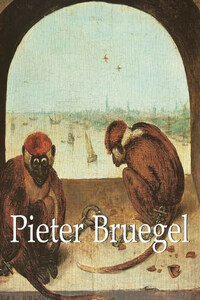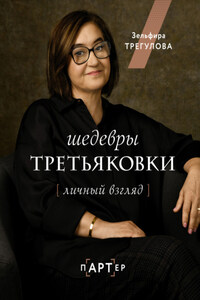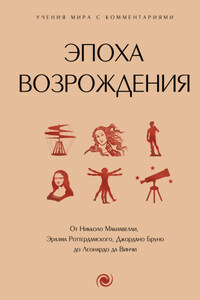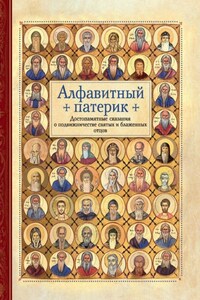1. Pieter Bruegel the Elder, The Painter and the Collector, ca. 1565.
Pen and brown ink, 25 × 21.6 cm.
Graphische Sammlung, Albertina, Vienna.
2. Sir Anthony Van Dyck, Pieter Brueghel the Younger, 1627–1635.
Charcoal, 24.5 × 19.8 cm.
Devonshire Collection, Chatsworth.
After an initial period of brilliance, during which time it rose to achieve perfection, Flemish art gradually fell into decline. Although thorough studies of its origins have revealed works, in particular those of the miniaturists, that are deserving of notice and which predate the artistic careers of the two Van Eycks, Hubert and Jan, the genius of the brothers remains stunningly spectacular, surpassing that of their predecessors to such a degree that it would be impossible to find an equally sudden, decisive and glorious evolution in the history of art.
Even so, the lesser artists who followed the Van Eycks, whether they were either directly trained by them or simply influenced by their work, also possessed talent of admirable quality, but their sense and understanding of nature was less penetrating and profound and their execution less scrupulous. In not applying the same closeness of attention, which till then had been a rule of Flemish painting, these artists lost their opportunity for originality, relaxing their focus on nature and placing the primary importance of their work in its details.
It became increasingly common for these painters to travel to Italy, and consequently their native impressions became mixed with those evoked by the lands through which they passed. Upon leaving the Flemish plains, the monotony of which is scarcely interrupted, the emigrant artists could not help but be struck by the imposing nature of the mountainous regions along their route. The Alps, the Tirols, and the Apennines offered the artists the rugged landscapes once sought by the Flemish Primitives, to whom simplicity had been of no interest. In their depiction of panoramas that stretched as far as the eye could see, these nomads remained faithful to their excessive preoccupation with the picturesque. They were of the belief that no amount of detail could be too much, and they tirelessly added bizarre rock formations and countless rivers to the harsh peaks and mountainous landscapes they painted. In addition, they laid out forests, towns, villages and castles that stretched into infinity. When, during their travels, they spent time in towns, at every step the Flemish painters encountered ancient ruins, monuments of various styles, statues, masterpieces by artists of the Classical age, and works of art no less admired by their less worthy successors; and everywhere they went they came across traditions and new ways of thinking vastly different from those they had known until then. How could they resist the seductions that solicited them from every direction? Their Italian colleagues, who were already organized in associations and guilds, welcomed the Flemish artists, affiliated them with their groups and initiated them into the wonders of the ars nova. On their return home, the travellers themselves often became apostles, extolling the principles of Italian painting and art in general, and attempting, though usually with little success, to imitate the Italian style.
In contrast to the strong unity that characterised the Flemish Primitives, these later artists of the Low Countries (who became known as the Romanists) allied themselves to a diverse range of qualities and trends that were frequently conflicting and often irreconcilable. In the treatment of landscapes, followers of academic doctrines, like the Brils and their imitators, aimed primarily for a decorative quality, which, in their somewhat awkward and affected compositions anticipated the noble expression and the poetic inspiration later found in the work of the two French artists Claude Gelée (known as le Lorrain) and Poussin. The Romanists were the only Flemish artists to work in the genre of historical painting, with its emphasis on large and detailed religious and mythological compositions. However, these works became increasingly rare because of the political difficulties that arose during the period: the princes and clergy of the Netherlands were too preoccupied with defending their under-appreciated power, and sometimes even their own existence, to be in a position to encourage painters of historical works.
Having originated with Mabuse, the trend of travelling to Italy was continued by Bernard Van Orley, Michael Coxie, Lambert Lombard, Pieter Coeck, Frans Floris and Martin de Vos, and finally by Otto Van Veen and his illustrious student Rubens. In opposition to these converts, one finds, here and there, a few artists who remained faithful to their national traditions and scrupulous observers of nature down to its most familiar detail. Although they lacked the style of their precursors, these artists nevertheless preserved their sincerity, and left us an irrefutable testimony of the popular customs of the period. In this group, there is no master whose works and life are more interesting than that of Pieter Bruegel. The first in a long line of painters, he was the founder of one of many Flemish families in which artistic talent seems to have been hereditary, for instance, the Van Eycks, the Metsys, the Van Orleys, the Pourbus, the Van Cleves, the Coxies, the Keys, the De Vos, and later, the Teniers.




